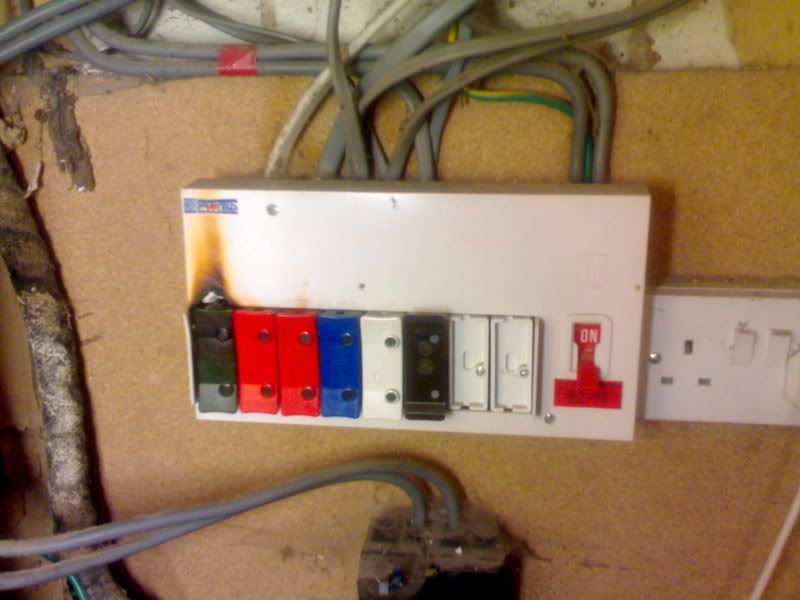Hi,
I've had a 10.5Kw Electric shower fitted but the electrician has only wired it directly to the Consumer unit. It was meant to be like this temporarily, but i'm not having him come back to finish off as the job so far was not done very well.
So to sum up - 10.5Kw shower wired to Pull switch with new 10mm cable then wire to consumer unit also with new 10mm cable. The cable is partly in conduit face fixed to wall and partly ran through the joists.
The Consumer unit is an old type Wylex, brown plastic with plug in type re-wireable fuses, the shower cable is wired directly into a 30a cartridge on the CU.
I've tried the shower on full power for 30mins and the 30a fuse hasn't blown - even though a 45a fuse is recommended for this shower.
So question is
Yes I know I need to replace my CU, the house actually requires a re-wire at some point (about 50% of circuits are in old rubber cabling) but I wasn't planning on doing this until christmas as I'm planning on running the cabling myself and then getting an electrician to sort CU and loose ends.
Will It be safe if I simple put a 45a MCB and carrier into the current CU or do I need to fit a separate shower CU?
If i need to fit a separate shower CU (the combined RCD with 40a MCD type) can I connect this inline between the main CU and Shower pull switch - I.e. split the 10mm cable from the Main CU and wire it into the Shower CU?
I know I may seem tight but I've been stung by the last Electrician and being as i'm going to do a re-wire shortly I don't really want to pay out for something that will be redundant shortly.
Another thought I had was to buy a new CU and use that Inline of the old one (on the shower circuit as above) and run the shower through that until I get the rewire done.
Cheers
Any advice would be much appreciated.
I've had a 10.5Kw Electric shower fitted but the electrician has only wired it directly to the Consumer unit. It was meant to be like this temporarily, but i'm not having him come back to finish off as the job so far was not done very well.
So to sum up - 10.5Kw shower wired to Pull switch with new 10mm cable then wire to consumer unit also with new 10mm cable. The cable is partly in conduit face fixed to wall and partly ran through the joists.
The Consumer unit is an old type Wylex, brown plastic with plug in type re-wireable fuses, the shower cable is wired directly into a 30a cartridge on the CU.
I've tried the shower on full power for 30mins and the 30a fuse hasn't blown - even though a 45a fuse is recommended for this shower.
So question is
Yes I know I need to replace my CU, the house actually requires a re-wire at some point (about 50% of circuits are in old rubber cabling) but I wasn't planning on doing this until christmas as I'm planning on running the cabling myself and then getting an electrician to sort CU and loose ends.
Will It be safe if I simple put a 45a MCB and carrier into the current CU or do I need to fit a separate shower CU?
If i need to fit a separate shower CU (the combined RCD with 40a MCD type) can I connect this inline between the main CU and Shower pull switch - I.e. split the 10mm cable from the Main CU and wire it into the Shower CU?
I know I may seem tight but I've been stung by the last Electrician and being as i'm going to do a re-wire shortly I don't really want to pay out for something that will be redundant shortly.
Another thought I had was to buy a new CU and use that Inline of the old one (on the shower circuit as above) and run the shower through that until I get the rewire done.
Cheers
Any advice would be much appreciated.


